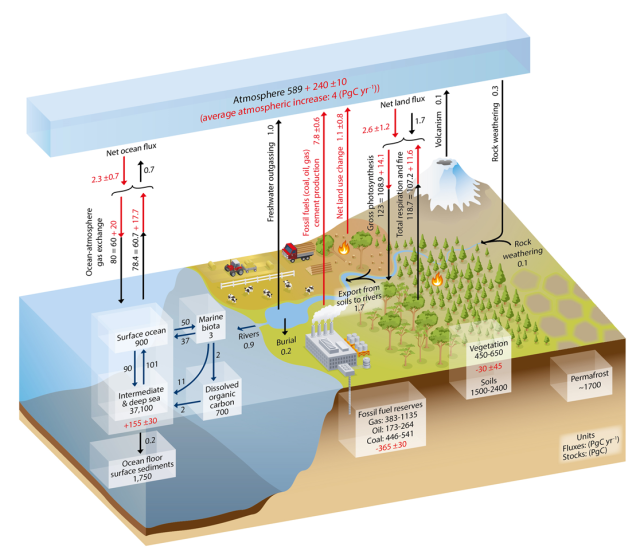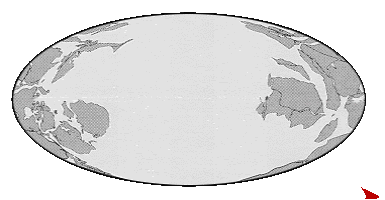Just google it and you will finds dozens of Carbon cycle illustrations. Most are cartoons, but half a dozen good ones can be filtered out. Mostly they agree in round numbers. The following by the IPCC is clearly the best:

Most models are focused on human changes to the cycle and these are usually shown in red. The real significance of human changes must be gauged by the size of human Carbon in relation the entire cycle.
The sizes of the fluxes and reservoir sizes is really very uncertain and it is remarkable that there is as much agreement between models as there is. We became interested in using Carbon isotope ratios to constrain the cycle. This has proved very challenging and very illuminating. Perhaps the best measured parameter we have is the decline in 13C heavy Carbon in relation to lighter 12C in the atmosphere. We expected it would be fairly easy to factor (presumably) known isotope ratios of the fluxes and derive the measured slightly less than -.02 per year change. Months later we have not yet succeeded.
When you add up all the yearly fluxes it is clear that over a thousand GtC is in constant motion. A Gt (or a Pg) is the weight of a cubic kilometer of water. That’s a lot of Carbon. Well over 300 GtC cycles in and out of the atmosphere. There is a tendency to think of closely balanced input and output fluxes as net fluxes, but the isotopic fractionations are different for every flux.
Humans currently put about 9 GtC into the atmosphere every year. It is effectively a one way input as it takes a very long time for the Carbon we pull from the ground to be replaced. Microorganisms in the soil put about 60 CtC in the atmosphere every year and this is also effectively a one way input as the yearly return flow is only a small fraction of a Gt.
You can see that human input is less than 3% of the atmospheric cycle and less than 1% of the planetary cycle.
Our work with integrating isotopes shows that current conceptions like the image above are wrong. What are shown as nearly balanced input and output fluxes will need to be far more skewed, and in all likelihood, the Carbon cycle will get bigger.






